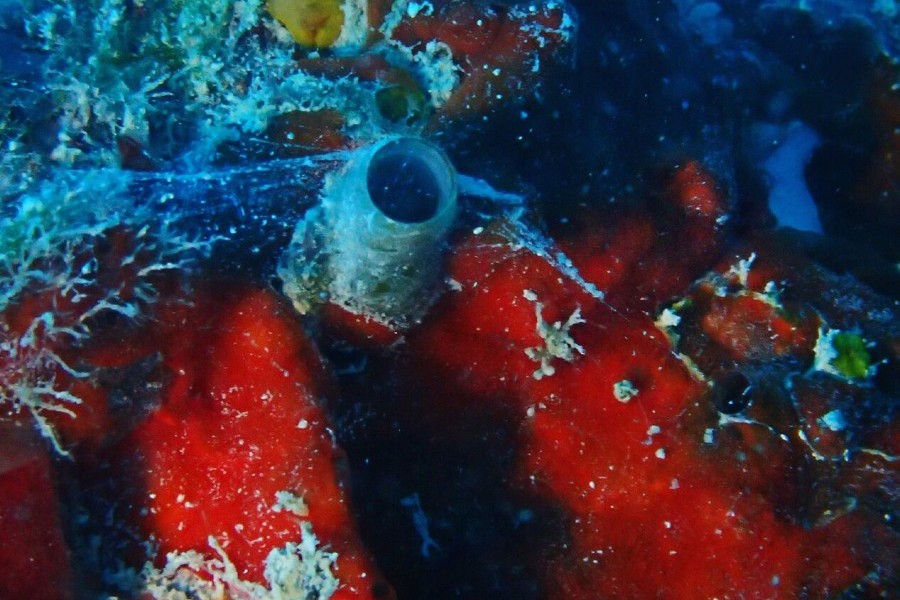Newly discovered snail may have implications for reef restoration
Mote is pleased to share the following news excerpt from colleagues at The Field Museum.
What’s brightly colored, lives on shipwrecks, filter-feeds like a whale, and shoots webs like Spiderman? Scientists have announced the discovery of a new species of snail that ticks all those boxes.
“These worm-snails are particularly weird animals,” says Dr. Rüdiger Bieler, Curator of Invertebrates at Chicago’s Field Museum and the lead author of a paper in the journal PeerJ, describing the new snails.“And while we find lots of unusual snails, this one could have a substantial impact on coral reef restoration efforts.”
Bieler, an adjunct scientist with Mote Marine Laboratory, got his first look at these strange snails during his research based at Mote's Summerland Key facility in the lower Florida Keys.
The new species, Thylacodes vandyensis, is named for the “Vandy,” the nickname the SCUBA diving community has given to the USNS General Hoyt S. Vandenburg, a retired naval vessel intentionally sunk to serve as an artificial reef in the lower Florida Keys. This ship is the only place the new worm-snails have ever been found, glued to the vessel's hull. Instead of having coiled shells like most snails, worm-snails have irregularly-shaped tubular shells that they cement onto a hard surface. And while most snails are slow movers, adult worm-snails don’t move at all — instead, they stick to one spot for the rest of their lives. That makes them good candidates to live on hard surfaces like ships and coral reefs.
The paper authors suspect these are nonnative snails from the Indo-Pacific region, and they say it's important to monitor for nonnative species colonizing artificial reefs. Worm-snails can be harmful to corals and other reef organisms.
Bieler says: "While artificial reefs, such as deliberately sunk ships, might help provide additional structures for corals and other marine animals to live on, we need to carefully monitor the species present. If we don’t, nonnative and potentially invasive species like Thylacodes vandyensis might eventually make its way from the artificial reef to the natural reef and cause trouble for the animals living there.”
